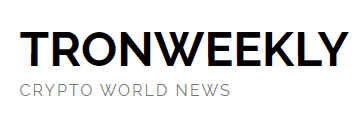You are here: Home / News / Ethereum Supply Surges to Pre-Merge Levels, Raising Inflation Concerns

February 6, 2025 by Bena Ilyas
- Ethereum’s supply reaches 120,521,523 ETH, surpassing pre-merge levels by 383 ETH.
- The Dencun upgrade in April 2024 contributed to Ethereum’s inflation trend shift.
- Ethereum’s transition to PoS reduced energy use by 99.9%, limiting supply growth.
Ethereum’s token supply has reached its highest level since January 2023, matching figures seen before the Merge update on September 15, 2022. Data from ultrasound.money indicates that the current ETH supply is 120,521,523 ETH, approximately 383 ETH higher than the Merge Day supply.
Astaria co-founder and CEO Justin Bram highlighted this supply increase on Twitter. Presto Research analyst Jaehyun Ha noted that Ethereum’s inflation trend followed the Dencun upgrade. This development raises concerns about Ethereum’s position as “ultrasound money,” a deflationary asset meant to outshine Bitcoin regarding store-of-value properties.
Impact of the Dencun Upgrade on Ethereum Supply
Ethereum’s post-Merge deflationary vision faced challenges early on, particularly during the FTX collapse. Initially, the network’s low activity caused insufficient ETH burning relative to new issuance, delaying its transition to deflation. However, as activity increased, ETH entered deflationary territory by mid-January 2023.
By early 2024, post-merge supply had dropped by over 450,000 ETH, equivalent to nearly $1.6 billion. However, the trend reversed in April, coinciding with changes from the Dencun upgrade. A crucial factor was EIP-4844, which introduced “blobs” to optimize Layer 2 (L2) transaction processing. Unlike traditional calldata storage, blobs allow temporary transaction data retention, expiring after 18 days.
Although ETH supply inflation marks a shift in post-Merge tokenomics, it still represents an improvement over the proof-of-work (PoW) system. The transition to proof-of-stake (PoS) cut ETH’s energy consumption by 99.9%, and a PoW-based model would have led to 9.5 million additional ETH, inflating supply significantly.
Before the Dencun upgrade, ETH transaction fees were calculated using gas price and amount, with a portion of fees burned. The introduction of blob transactions optimized large data payloads for L2s, utilizing a separate fee unit called “blob gas.” This shift reduced the proportion of burned fees, impacting ETH supply trends.
For the first time in Ethereum PoS, validators have voted to increase the gas limit and it's happening now. 🎉
We saw the last gas limit increase with the London hardfork in August 2021, still PoW. pic.twitter.com/JT8jdcWcQm
The Dencun upgrade, implemented in March 2024, played a key role in this turnaround. Additionally, a portion of ETH’s liquidity has migrated to Solana amid the ongoing memecoin rally and the emergence of multiple Layer 2 solutions.
Ethereum’s network activity remains strong despite the increased supply, mitigating concerns over inflationary risks. Presto’s Jaehyun Ha emphasized that while reduced ETH burning affects supply, ETH’s overall ecosystem growth ensures the network’s sustainability.
Read More: Ethereum Strikes Back with Gas Limit Hike, Surpassing 32 Million

 6 months ago
39
6 months ago
39




 English (US) ·
English (US) ·